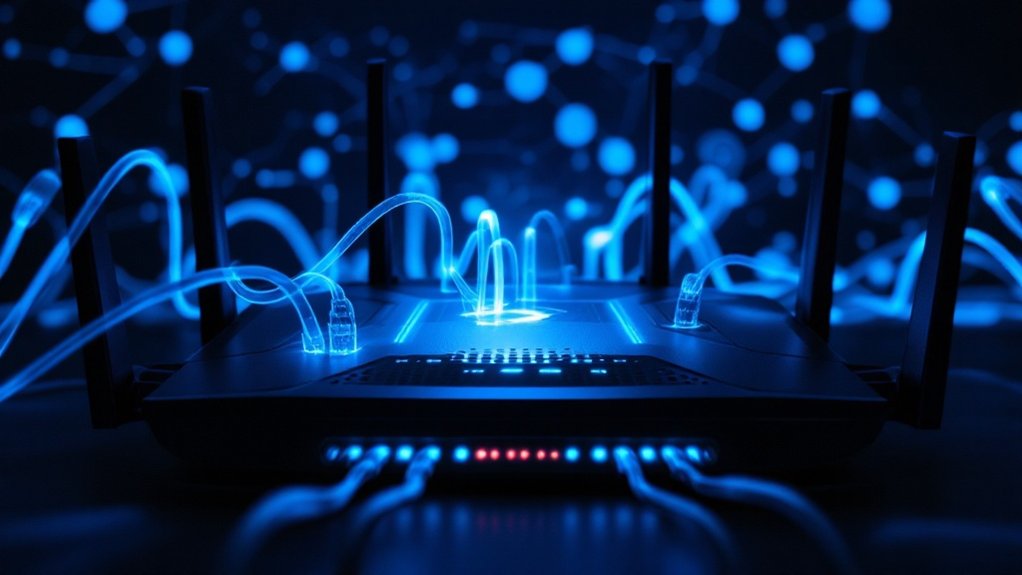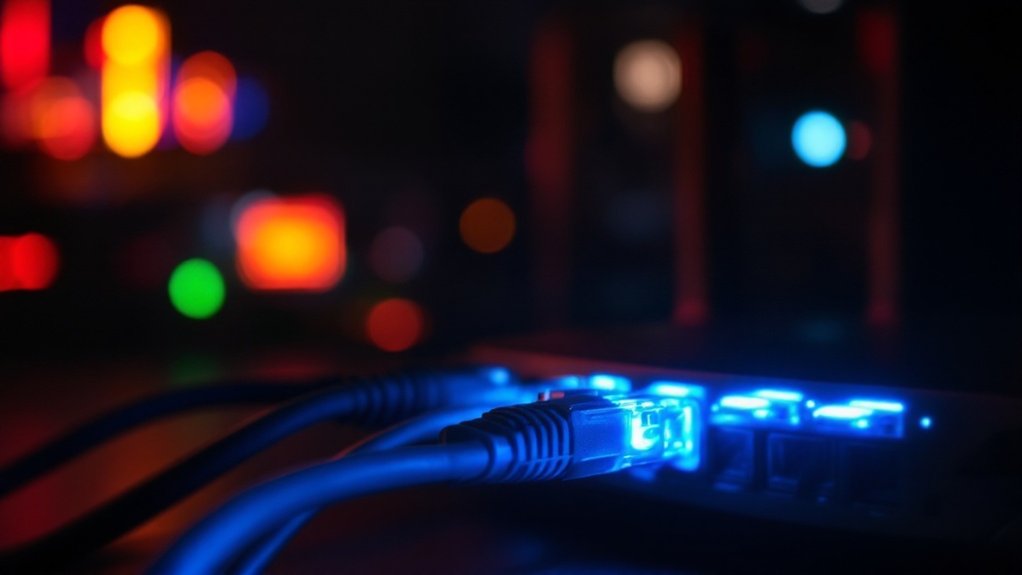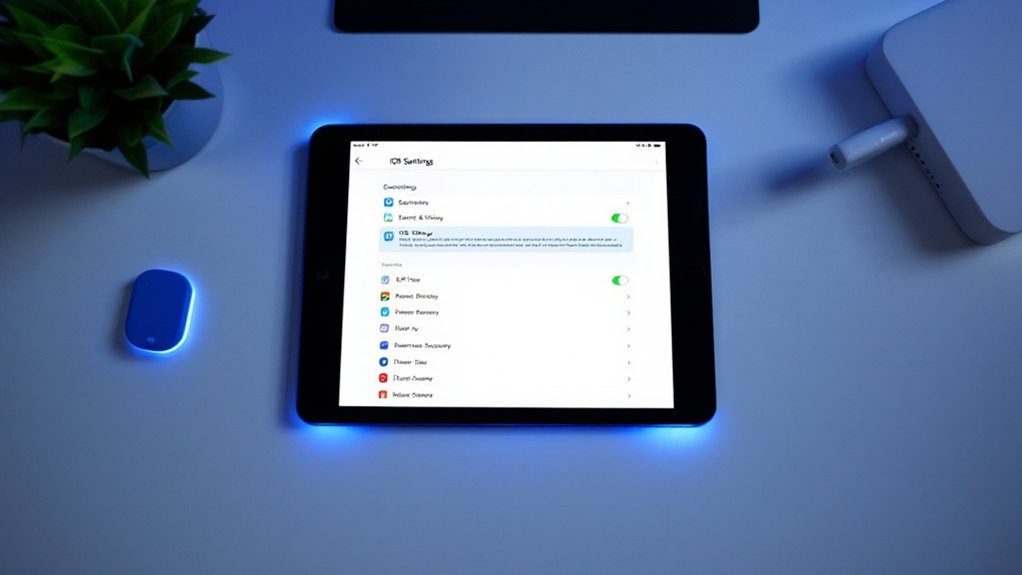High ping typically results from poor internet connectivity, physical distance to game servers, outdated hardware, software interference, and ISP limitations. Common fixes include switching to wired ethernet connections, selecting local servers, updating network equipment, optimizing security software settings, and choosing fiber or cable internet providers. During peak usage hours (5 PM – 9 PM) can increase latency through network congestion, implementing these solutions systematically helps achieve superior gaming performance, with numerous additional technical adjustments available for advanced optimization.

Nearly every online gamer has experienced the frustration of high ping, a common networking issue that measures the time it takes for data to travel between a player’s device and game servers. Multiple factors contribute to heightened ping rates, with internet connection quality serving as a primary culprit. Unstable connections, particularly those relying on Wi-Fi signals obstructed by walls, frequently result in latency spikes, whereas ethernet connections typically provide more consistent performance with lower ping values. Ping rates under 50 ms are considered optimal for competitive gaming.
Network congestion considerably impacts ping rates, especially during peak usage hours between 5 PM and 9 PM when multiple devices compete for bandwidth. Quality of Service settings can help prioritize gaming traffic over other network activities. Background applications, streaming services, and large downloads create additional strain on network resources, leading to temporary spikes in latency.
The physical distance between players and game servers plays an essential role, with international servers consistently displaying higher ping rates compared to local alternatives. Implementing port forwarding on your router can significantly reduce latency when connecting to game servers.
Hardware limitations present another considerable challenge, as outdated routers and network adapters struggle to handle modern connection speeds. Insufficient RAM and processing power can create bottlenecks in data transmission, whilst overheating hardware may cause sporadic latency issues.
Software interference from antivirus programs, firewalls, and operating system updates can further compound these problems, requiring careful configuration for ideal gaming performance.
Internet Service Provider factors heavily influence ping rates, with fiber and cable connections typically offering superior latency compared to satellite and mobile alternatives. The quality of ISP infrastructure and routing efficiency directly affects overall connection performance, with some providers implementing specialized traffic prioritization for gaming data.
Game-specific issues, including server-side problems and poor optimization, can result in heightened ping rates regardless of player setup.
To address high ping issues, users should consider upgrading to ethernet connections, managing network traffic during gaming sessions, selecting local servers when available, and maintaining current hardware and software configurations.
Regular system maintenance, including malware scanning and driver updates, helps prevent unnecessary latency increases, whereas choosing appropriate ISP services and plans can provide a foundation for consistent, low-ping gaming experiences.
Frequently Asked Questions
Does a Gaming VPN Actually Help Reduce High Ping Issues?
Gaming VPNs can reduce high ping in specific scenarios, particularly when ISP routing is suboptimal or when facing network congestion.
Nevertheless, the effectiveness depends on server proximity, network infrastructure, and VPN protocol selection.
Studies indicate that although some users experience up to 30% ping reduction, others may see increased latency.
The technology works best when connecting to nearby servers and utilizing modern protocols like WireGuard.
Can Outdated Network Drivers Affect Ping Even With Good Internet Speed?
Outdated network drivers can greatly impact ping values, even with high-speed internet connections.
Research indicates that obsolete drivers often lack essential optimization protocols and traffic management capabilities, leading to increased latency of 20-50ms.
Network experts confirm that outdated drivers may improperly handle data packet prioritization, causing irregular ping spikes and degraded performance, particularly during resource-intensive activities like gaming or streaming.
How Much Ping Is Considered Too High for Competitive Gaming?
For competitive gaming, ping above 100ms is usually considered too high, with ideal ranges varying by genre.
First-person shooters require sub-50ms for peak performance, whereas fighting games demand under 40ms for frame-perfect execution.
MOBAs function best below 60ms, and RTS games remain playable up to 100ms.
Professional esports tournaments typically maintain strict ping requirements under 30ms to guarantee fair competition.
Why Does Ping Spike at Specific Times During the Day?
Ping spikes during specific times occur primarily because of network congestion during peak usage hours, typically between 5PM and 9PM when most users are active online.
ISP bandwidth becomes strained as millions simultaneously engage in high-data activities like streaming and gaming.
Furthermore, scheduled network maintenance during off-peak hours, usually late night, can cause temporary spikes, as well as geographical distance to servers compounding these timing-related fluctuations.
Should I Choose Wi-Fi 5GHZ or 2.4ghz for Better Ping?
5 GHz Wi-Fi typically provides better ping performance for gaming and real-time applications, offering latency as low as 5ms and speeds up to 1300 Mbps.
Nonetheless, the ideal choice depends on specific circumstances, with 2.4 GHz being preferable when distance and obstacles are factors.
Users within 15-20 feet of their router should select 5 GHz for superior ping, whereas those farther away may achieve more stable connections on 2.4 GHz.









